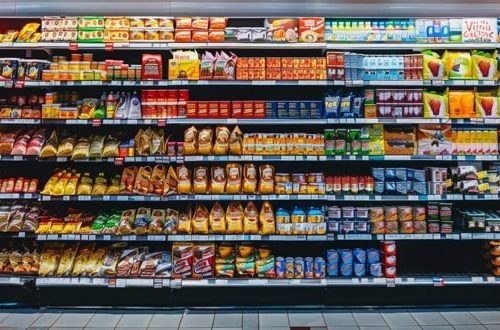The 6th edition of Circular Week themed “Put Economy in Circular Motion” was organized by INNOWO and held in Warsaw between 23 – 29 October 2023. Frost & Sullivan was invited as a knowledge partner for the event promoting Circular Cities, however, I also participated in other events organized throughout the week to dive into the discussions of the Circular Economy growth accelerators. Here are the key takeaways.
Sustainable packaging – top growth opportunities for innovation and new investments
The first day of the Circular Week 2023 was organized at the British Embassy in Warsaw. The industry experts, such as DS Smith, TOMRA, Albéa Group, Plastics Europe, Huhtamaki, ING, and UNEP/GRID-Warszawa discussed the opportunities and call to action on the Road to Sustainable Packaging.

Image provided by Paulina Blaszczyk
The right actions can bring growth in productivity and sustainability but need to be implemented across the right sectors, and markets, and must fit for purpose with the top 5 urgent intervention areas to limit plastic pollution determined as:
- Reduction in waste generation and littering.
- Encourage multi-use, reuse & refill.
- Incorporating full recyclability of packaging.
- Incorporating recycled content in packaging.
- Incorporating harmonized labeling of packaging & waste containers to encourage proper sorting-at-source.

Image provided by Paulina Blaszczyk
The top growth opportunities for innovation and new investments are expected to cover the following areas:
♻ Prevention of plastic waste generation with the introduction of new product designs, new biodegradable materials, and plastic alternatives when possible.
♻ Introduction of reuse & refill stations, convenient for the customers as well as all the stakeholders along the value chain.
♻ Integration of efficient packaging collection schemes, including Deposit Return Schemes (DRS).
♻ Ongoing development of mechanical recycling for plastics with a key focus on advanced sorting.
♻ Continuing R&D on chemical recycling to complement efficiency in the Circular Economy of plastics and recover hard-to-recycle materials, MRFs reject streams and microplastics.
♻ Introducing satellite imagery, remote sensing, and AI data to track progress in the reduction of littering across cities.
Circular cities – a collaborative approach towards net-zero
During the event dedicated to Circular Cities, Frost & Sullivan was invited to participate in the Roundtable for Local Administration & Experts. We met in the beautiful part of Warsaw’s Old Town to discuss the opportunities for circular cities and present examples of initiatives and case studies. Cities represent an intense concentration of population, consumption, progressing development, and emissions hence are recognized as key players in the transition towards circular and low-carbon economy, being at the forefront of change and innovation.

Image provided by Paulina Blaszczyk
According to Frost & Sullivan, new technologies play an important role in the transition to net-zero but need to be inclusive and fit for purpose. The role of digital technologies in net-zero actions across cities brings significant efficiency and value by setting achievable goals and strategy, modeling scenarios, verifying relevance, identifying required resources, releasing funding mechanisms, supporting execution, as well as monitoring and reporting on the progress. The next-generation climate intelligence solutions combining real-time datasets with AI are perceived to bode well for all urban stakeholders, enabling communication information effectively and innovatively, engaging citizens, and measuring sustainability outcomes in multiple city sectors along with economic and social co-benefits.
Circular fashion – textile as the new plastic?
Today the environmental impact of the fashion industry is comparable to the size of the plastic pollution, mainly due to the high consumption rate, with an urgent need for transformation that can only be obtained with cross-industry collaboration and transparency, fuelled by the implementation of efficient technologies for tracking, data collection and sharing, material processing, with a high level of consumers’ education as well as unified cross-region legislation dedicated to production and disposal.
The key challenges faced by the fashion industry were discussed from different perspectives: textile manufacturers, waste collectors and management specialists, recyclers, investors, and finally the consumers and fashion influencers.
The key opportunities for the fashion industry to move towards greater sustainability were concluded as follows:
♻ Scale up textile-to-textile and textile-to-chemicals recycling technologies to enable cooperation between the manufacturers and the recyclers to reduce consumption of raw materials.
♻ Plastic recyclers to support the system by implementing the recycling of polyester from end-of-life textiles (to complement the existing PET bottles recycling into textiles) to increase the volume of clothes produced from waste textiles or to produce other products from waste textiles.
♻ Fit for purpose design & manufacturing by extending the lifetime of clothes to put them into rent/reuse/second-hand market or to manufacture clothes from a single type of materials that are easily recyclable
♻ Introduction of track & trace solutions and material passports for cross-industry transparency and data-based knowledge on the global material flow (with manufacturers to report on material flow).
♻ Local bottom-up sustainable approach with pan-governmental involvement and collaboration.
♻ Development of new business models to extend lifetime and limit generation of textile waste, such as the development of the second-hand market, product-as-a-service with rental services and fashion libraries, repair, reuse, and repurposing.
♻ R&D in scope of material revolution to produce clothes from new material, for example, nature-based bioeconomy, textiles made from different waste types.
♻ Ongoing training, knowledge sharing, and education of the end-users.
The Circular Economy of the plastic packaging market as well as the opportunities for climate-smart cities were analysed in the recently published growth opportunity analysis deliverables of Frost & Sullivan:
- Global Mechanical Recycling of Plastic Packaging Waste.
- Global Circular Economy of Chemical Recycling of Plastic Packaging.
- Climate Smart Cities -Growth Opportunities in Global Real-Time Monitoring of GHG Emissions Market.
Growth opportunities for the Circular Economy of Textiles are included in the research scope plan for 2024.




